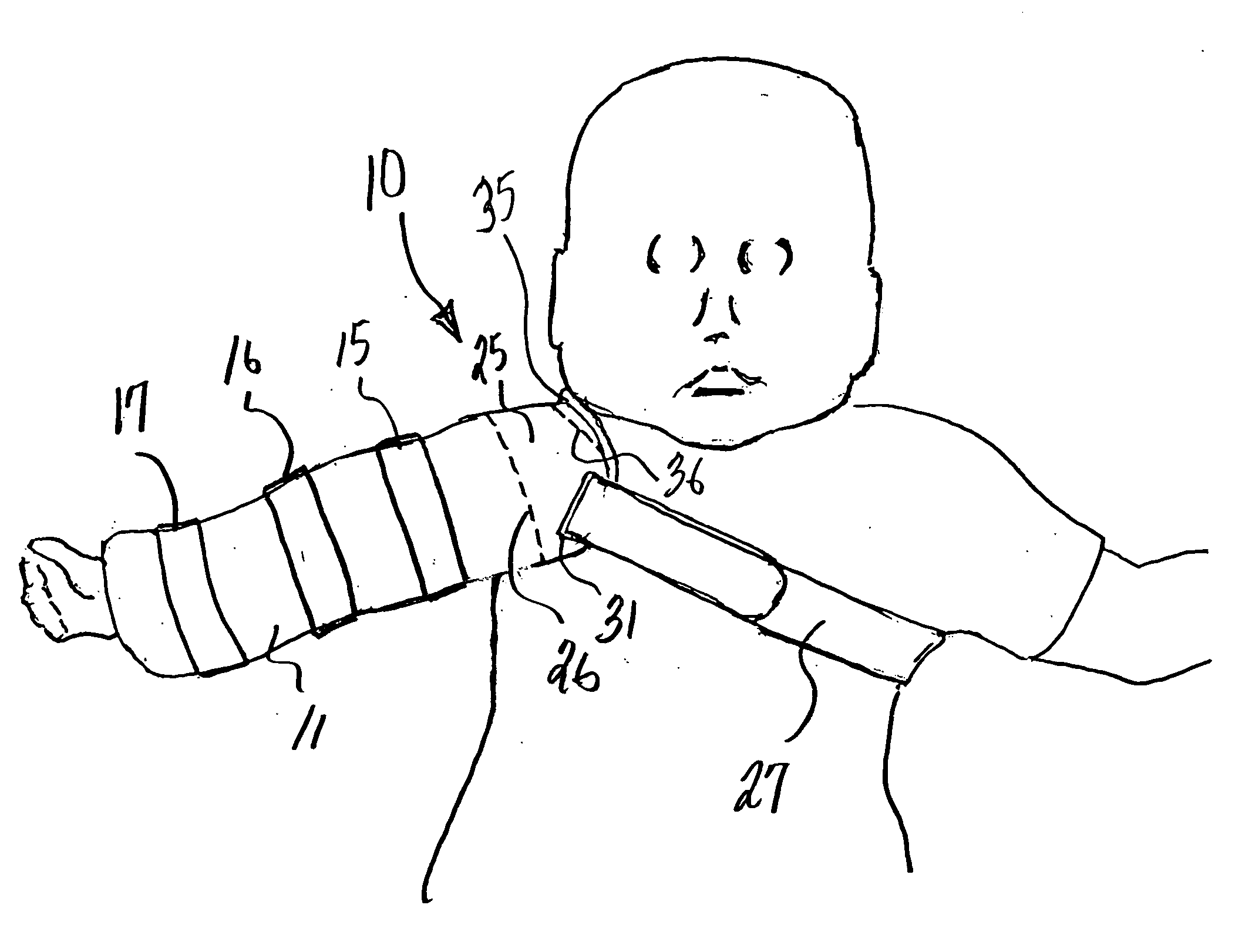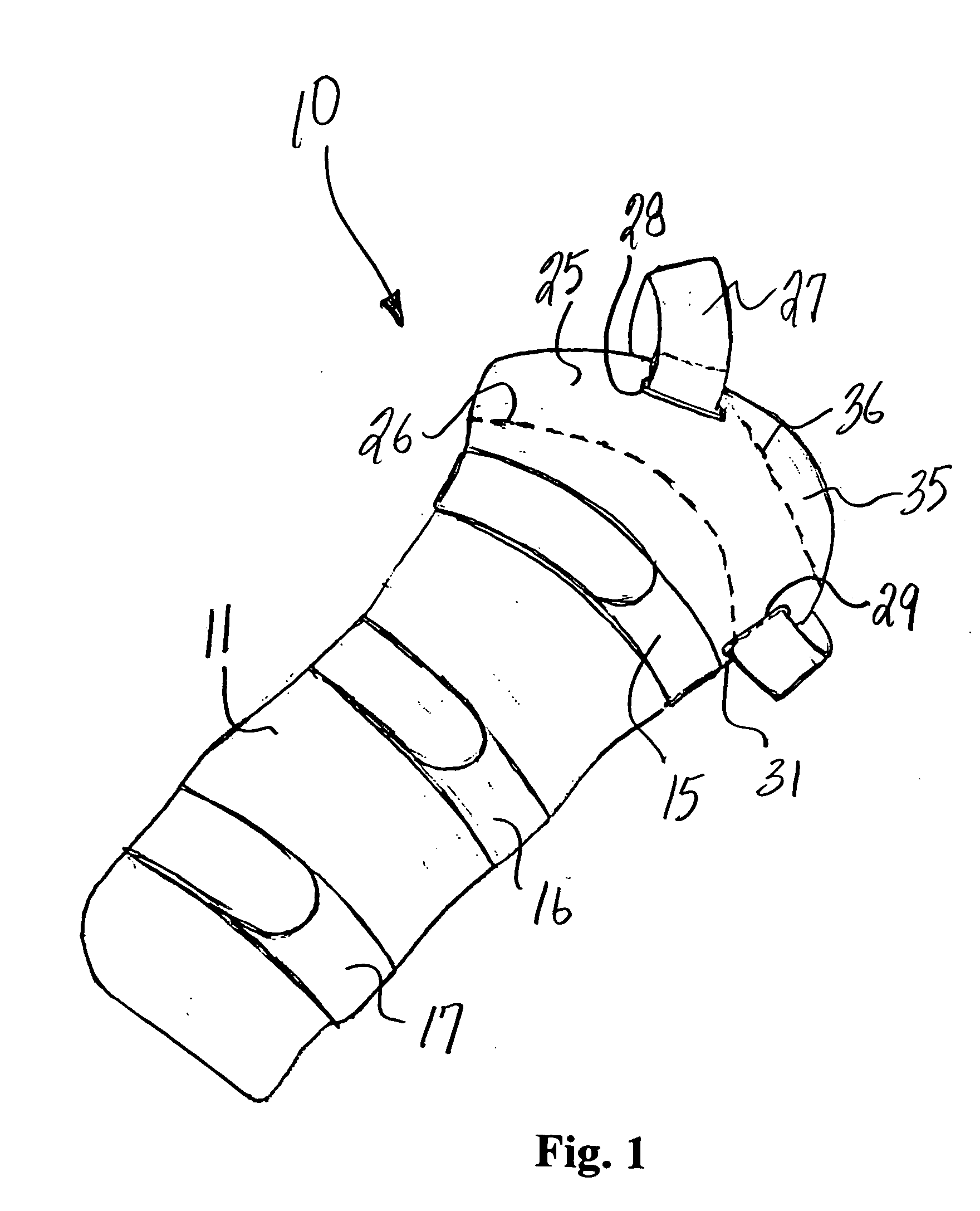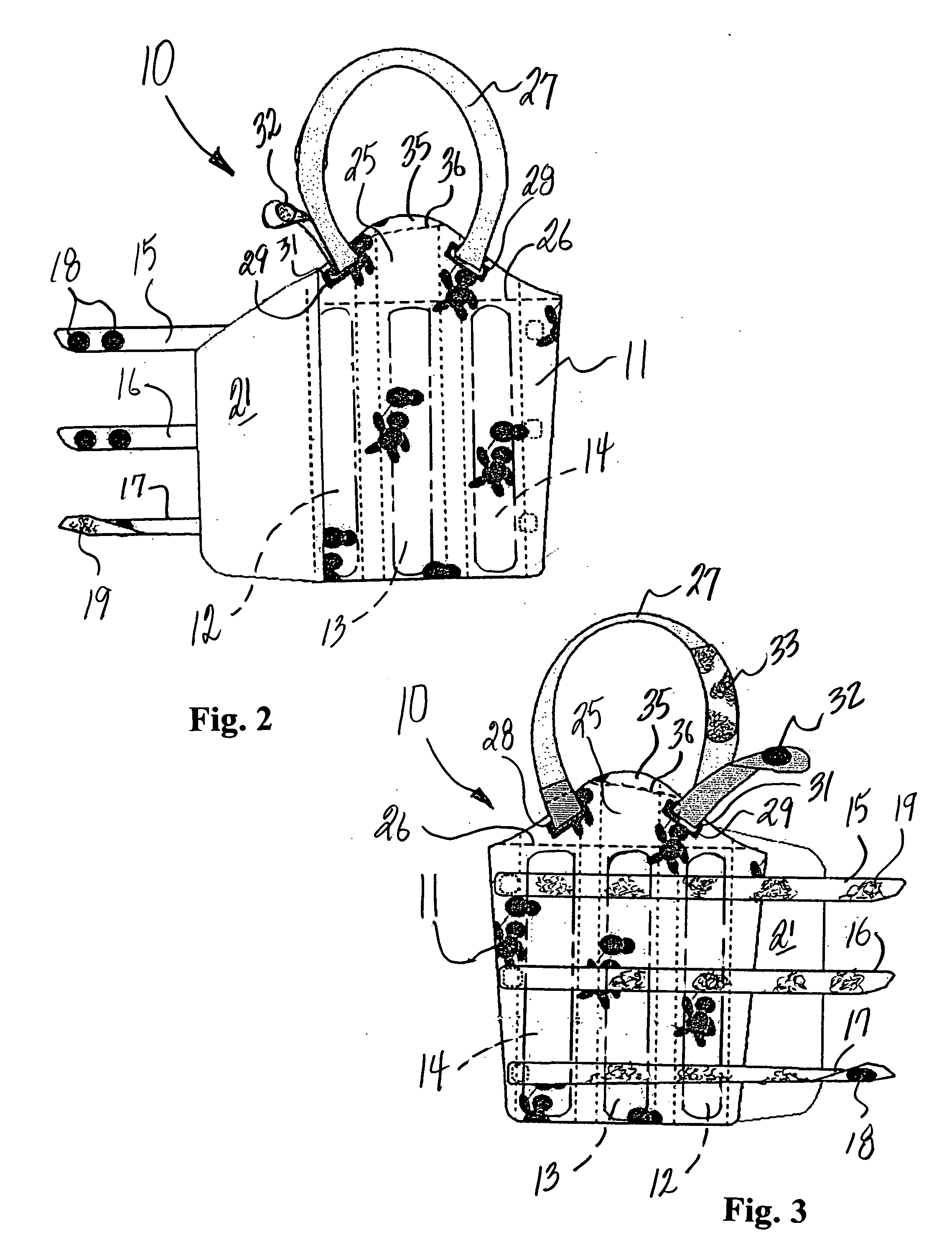Pediatric arm restraint
a technology for preventing children from falling and bending, applied in the field of arm restraints, can solve the problems of disturbing children, requiring the release of the entire arm, and splinting the arm, and achieve the effect of easy hiding under clothing
- Summary
- Abstract
- Description
- Claims
- Application Information
AI Technical Summary
Benefits of technology
Problems solved by technology
Method used
Image
Examples
Embodiment Construction
[0044] Referring now specifically to the drawings, a pediatric arm restraint according to the present invention is illustrated in FIG. 1, and shown generally at reference numeral 10. The arm restraint 10 is intended to be worn on each arm to prevent the child from disturbing delicate sutures after cranio-facial surgery. Unlike prior art devices discussed above, the two arm restraints 10 are secured to the child independent of one another, are comfortable, allow free movement of the hands and wrists, and are conveniently applied to and removed from the child with minimal disturbance.
[0045] As best shown in FIGS. 2 and 3, the arm restraint 10 comprises a quilted fabric arm wrap 11 with three sewn-in longitudinal stays 12, 13 and 14. The stays 12, 13, and 14 extend from one end of the arm wrap 11 to the other, and ar formed of a rigid or semi-rigid plastic. Wrap-around adjustment straps 15, 16, and 17 are sewn to the outside of the arm wrap 11, and serve to custom fit and secure the ar...
PUM
 Login to View More
Login to View More Abstract
Description
Claims
Application Information
 Login to View More
Login to View More - R&D
- Intellectual Property
- Life Sciences
- Materials
- Tech Scout
- Unparalleled Data Quality
- Higher Quality Content
- 60% Fewer Hallucinations
Browse by: Latest US Patents, China's latest patents, Technical Efficacy Thesaurus, Application Domain, Technology Topic, Popular Technical Reports.
© 2025 PatSnap. All rights reserved.Legal|Privacy policy|Modern Slavery Act Transparency Statement|Sitemap|About US| Contact US: help@patsnap.com



